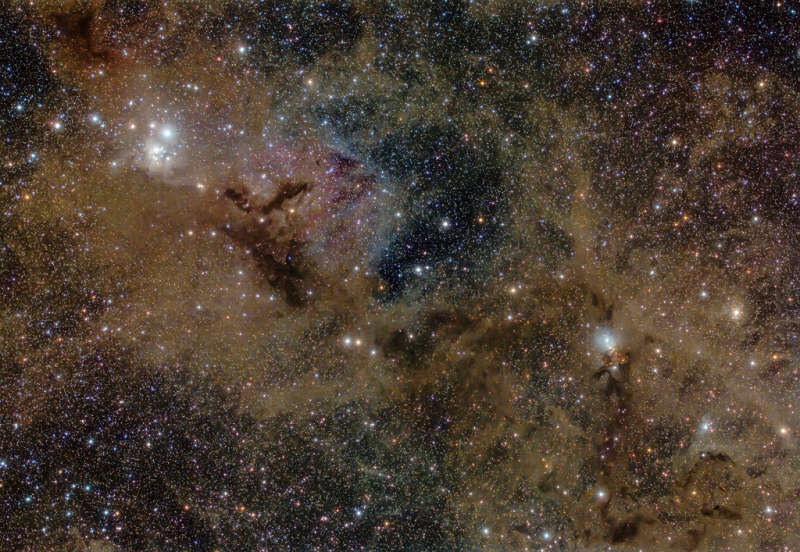
|
Credit & Copyright: Lynn Hilborn
Explanation:
This cosmic expanse of dust, gas, and stars covers some 6 degrees
on the sky in the heroic constellation
Perseus.
At upper left in
the gorgeous skyscape
is the intriguing young star cluster
IC 348 and
neighboring Flying Ghost Nebula.
At right, another active star forming
region NGC 1333 is
connected by dark and dusty tendrils on the outskirts
of the giant
Perseus
Molecular Cloud, about 850 light-years away.
Other dusty nebulae are scattered around the field of view,
along with the faint
reddish glow of hydrogen gas.
In fact, the cosmic dust
tends to hide the newly formed stars
and young stellar objects or protostars from
prying optical telescopes.
Collapsing due to
self-gravity, the
protostars
form from the dense cores embedded in the dusty molecular cloud.
At the molecular cloud's
estimated distance, this field
of view would span almost 90 light-years.
|
January February March April May June July August September October November December |
| ||||||||||||||||||||||||||||||||||||||||||||||||
NASA Web Site Statements, Warnings, and Disclaimers
NASA Official: Jay Norris. Specific rights apply.
A service of: LHEA at NASA / GSFC
& Michigan Tech. U.
Based on Astronomy Picture
Of the Day
Publications with keywords: reflection nebula - star formation - dark nebula
Publications with words: reflection nebula - star formation - dark nebula
See also:
- The Horsehead Nebula
- APOD: 2025 December 9 Á The Heart of the Soul Nebula
- APOD: 2025 November 19 Á Chamaeleon Dark Nebulas
- APOD: 2025 September 19 Á The NGC 6914 Complex
- APOD: 2025 July 10 Á Lynds Dark Nebula 1251
- APOD: 2025 June 23 Á W5: Pillars of Star Formation
- APOD: 2025 April 28 Á Gum 37 and the Southern Tadpoles
